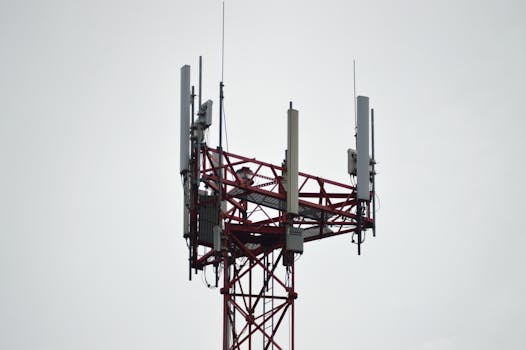
Comparative Analysis of 4G vs 5G Performance Metrics
Comparative Analysis of 4G vs 5G performance metrics is a crucial aspect of understanding the advancements and improvements in wireless network technology. The fifth generation of wireless network technology, known as 5G, has been gaining significant attention in recent years due to its promise of faster data speeds, lower latency, and greater connectivity. In this article, we will delve into a comparative analysis of 4G vs 5G performance metrics, exploring the differences and advantages of each technology.
Introduction to 4G and 5G

4G, or fourth-generation wireless, is a technology that was first introduced in the late 2000s. It was designed to provide faster data speeds and greater connectivity than its predecessors, 2G and 3G. 4G networks use a combination of technologies, including LTE (Long-Term Evolution) and WiMAX (Worldwide Interoperability for Microwave Access), to provide download speeds of up to 100 Mbps and upload speeds of up to 50 Mbps.
5G, on the other hand, is a more recent technology that was first introduced in 2019. It is designed to provide even faster data speeds, lower latency, and greater connectivity than 4G. 5G networks use a combination of technologies, including millimeter wave (mmWave) and sub-6 GHz frequencies, to provide download speeds of up to 20 Gbps and upload speeds of up to 10 Gbps.
Performance Metrics Comparison

When comparing the performance metrics of 4G and 5G, there are several key factors to consider. These include data speed, latency, capacity, and coverage. In terms of data speed, 5G is significantly faster than 4G, with download speeds of up to 20 Gbps compared to 4G’s 100 Mbps. This makes 5G more suitable for applications that require high-bandwidth, such as video streaming and online gaming.
Latency is another important performance metric, and 5G has a significant advantage over 4G in this regard. 5G networks have a latency of as low as 1 ms, compared to 4G’s 50 ms. This makes 5G more suitable for applications that require real-time communication, such as virtual reality and telemedicine.
In terms of capacity, 5G is also more advanced than 4G. 5G networks can support a much larger number of devices than 4G networks, making them more suitable for applications such as smart cities and IoT (Internet of Things). 5G networks can also support a wider range of frequency bands, including mmWave and sub-6 GHz frequencies, which provides greater flexibility and coverage.
Advantages and Disadvantages

Both 4G and 5G have their advantages and disadvantages. 4G is a more established technology, with wider coverage and a larger number of devices available. However, it is also a more mature technology, and its performance metrics are not as advanced as 5G. 5G, on the other hand, is a more recent technology, with faster data speeds, lower latency, and greater capacity. However, it also has limited coverage and a smaller number of devices available.
Conclusion

In conclusion, the comparative analysis of 4G vs 5G performance metrics highlights the significant advancements and improvements in wireless network technology. 5G is a more recent technology, with faster data speeds, lower latency, and greater capacity, making it more suitable for applications that require high-bandwidth and real-time communication. However, 4G is still a viable option, with wider coverage and a larger number of devices available. As the adoption of 5G continues to grow, it is likely that we will see significant improvements in wireless network technology, and a greater range of applications and use cases will emerge.


